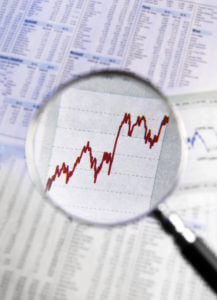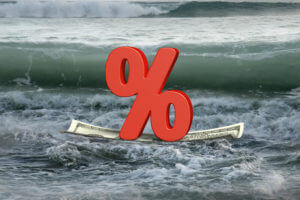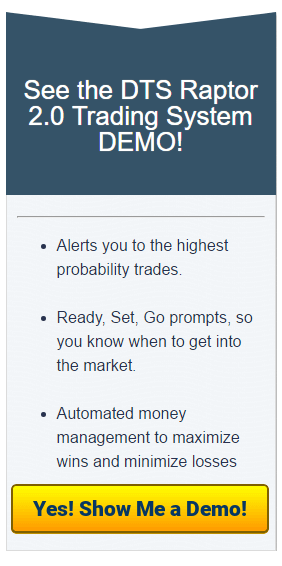Day Trading Tips and Tricks
Use the Daily Range to Set Stop Loss and Profit Targets

Anyone who spends any time in our trade room, or simply talking to me about trading knows I am a support and resistance addict. I use it daily, with every trade. My approach to trading ANYTHING relies on the information given through Support and Resistance. And, when people ask me about stops and profits targets ….yup …I say “Put them near key support and resistance levels.”
But what if I had to do it differently? What if my trading REQUIRED me to choose mechanical, calculated values instead? How the heck would I do it? Could this a Support and Resistance junkie really come up with a way that made sense? I always enjoy a challenge. So, I spent some time thinking about it. – If I had to choose a method for placing my stops and profit targets not based on my favorite method here is how I would:
Before I get to the actual “nuts and bolts”, let’s cover the theory first. The name of the game here is Daily Range. What is a daily range? It’s the number, in ticks, that each trading instrument makes, on average, each day. The number varies depending on market conditions, instrument, and the sampling size. A quick-moving instrument might have a big daily or monthly range because of a recent breakout. But, when you look at 30-day or higher, you may find a different number. In fact, for this article, we will focus on a 30-day average since it provides a good “snapshot” of what the instrument was doing recently without making it too small a set of data.
Why would we want to use the daily range?
 If we understand how much the instrument usually moves, we can plan out the “average” move within a given day.
If we understand how much the instrument usually moves, we can plan out the “average” move within a given day.- By using this information, we customize our approach based on market conditions and the specific instrument.
- By understanding the “normal” move, we can see if the price is really going in our favor, or if it is starting to retrace more than it “should”.
So how would we use it?
Percent (%) of Daily Range as stop and take profit
We could say that we would want a little more than 50% of the range of the day to be the stop, meaning the instrument should not go against us more than half of it’s normal range.
We could say that we want to set a profit target at 80% of the daily range for intra-day trading to capture most of the move for a single day while leaving “wiggle room” for our entry not being a the “perfect” place to start the day.
For longer trades, we could look set a profit target based on a multiple day range, based on how many days we estimate we will be in the trade, if it continues to move in our favor.
Percent (%) of Daily Range as a Trailing or Stepping Stop
 Once our position is live in the market, we could move our stop based on the range of the day. For example, we might move our stop to break-even when 50% or more of the daily range equals our target profit point. And maybe when it has moved 80% of the daily range, we move the stop to +30% of the range of the day, capturing profit, but still allowing for a 50% normal daily move as a retracement.
Once our position is live in the market, we could move our stop based on the range of the day. For example, we might move our stop to break-even when 50% or more of the daily range equals our target profit point. And maybe when it has moved 80% of the daily range, we move the stop to +30% of the range of the day, capturing profit, but still allowing for a 50% normal daily move as a retracement.
Another technique is choosing a trailing stop based on a percent of the daily range. For example, we could trail by 45% of daily range. If the range of the day is 100 ticks, this would mean a 45 tick trailing stop. With a consistent percent-based approach, you will see stops becomes tighter on less volatile instruments and bigger on more volatile instruments . This makes it more adaptable to different instruments while still employing a mechanical approach.
Fibonacci as % of Daily Range
 This one is for all the Fibonacci nerds. Why not use Fibonacci to determine the correct percentage to use in your daily range calculation? You can be conservative and place your stop-loss behind the 61.8% fib level of the range of the day, or use the 38.2% fib level of the daily range in a stronger moving trend This approach will keep a tighter stop and increase your contract size accordingly.
This one is for all the Fibonacci nerds. Why not use Fibonacci to determine the correct percentage to use in your daily range calculation? You can be conservative and place your stop-loss behind the 61.8% fib level of the range of the day, or use the 38.2% fib level of the daily range in a stronger moving trend This approach will keep a tighter stop and increase your contract size accordingly.
The same holds true for profit targets. Use can use fib-based numbers as multipliers against the daily range number.
Anyway you slice it, you can place mechanically calculated numbers for both stops and profit targets that still make sense for each instrument and the current market conditions. Please note that the sampling size of range of the day can also be adjusted depending on the goals of the trader and
Please note that the sampling size of the daily range can also be adjusted depending on the goals of the trader and his day trading system. A day trader might only need the prior day’s range to figure out shorter-term trades, while a position trader might look at daily ranges across the last year’s average to get the “bigger picture”.
Of course, you can do all of this on your own. But, if you want a fast and easy way to set and view a variety of ranges on your chart, you will need a tool like Day Ranger.
[NOTE: Day Ranger is a stand-alone product. However, it is included in both of our flagship trading systems.]
Hopefully, this will inspire some of you to try new methods outside the ones you are comfortable with. Of course, in SIM mode first! Remember – the more approaches you understand and have at your disposal, the better you will be prepared for the variety of trading situations you will encounter in the markets.




